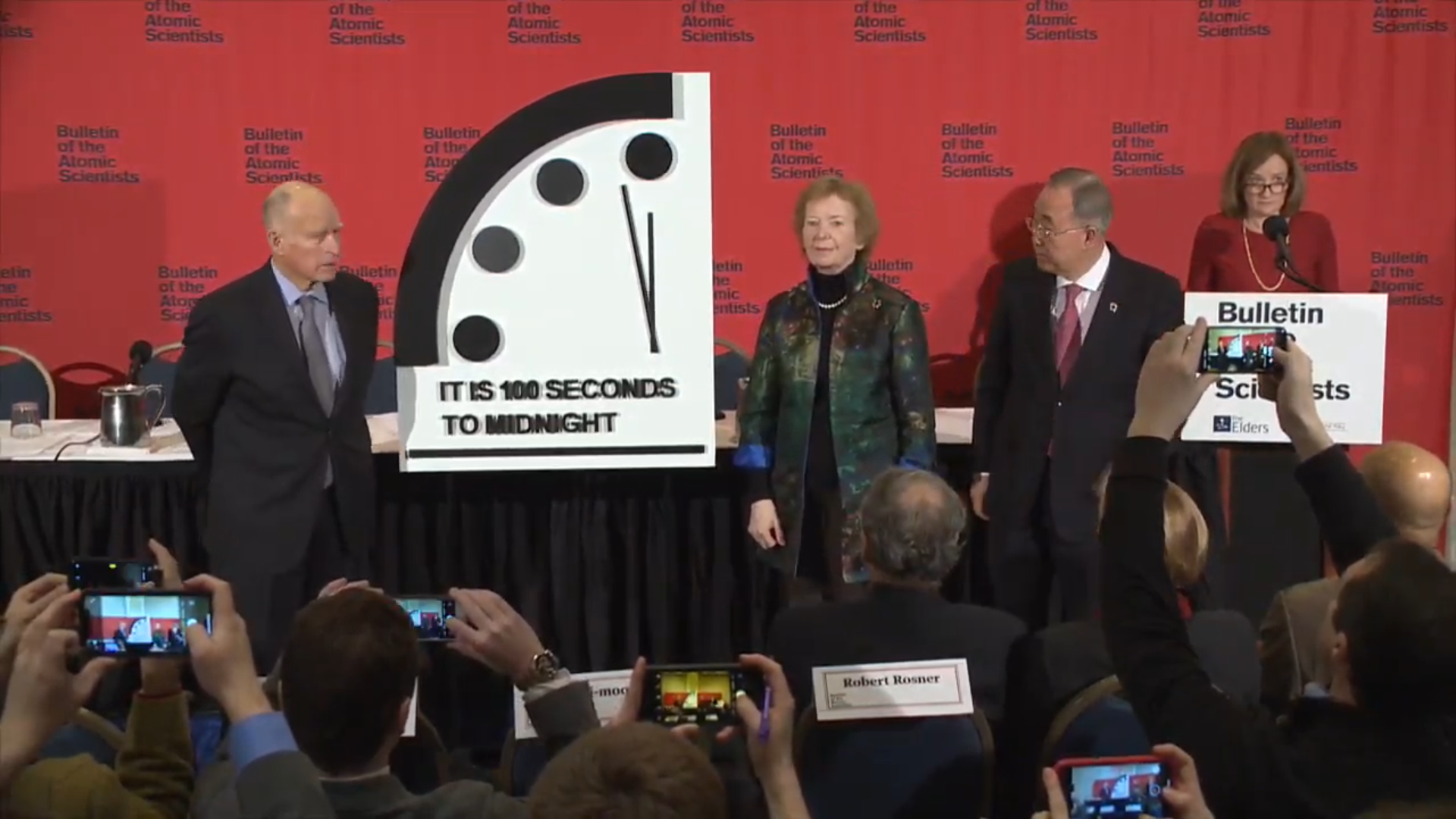Scientists Think We’re Closer to the End of the World Than Ever

Credit to Author: Matthew Gault| Date: Thu, 23 Jan 2020 16:42:03 +0000
Scientists think we’re closer to the end of the world than ever before.
The Bulletin of the Atomic Scientists—a nonprofit group of scientists and security experts who monitor the possibility of Armageddon caused by humans—has moved the Doomsday Clock 100 seconds to midnight, the closest to midnight the clock has been in its 75-year history.
“Humanity continues to face two simultaneous existential dangers—nuclear war and climate change—that are compounded by a threat multiplier, cyber-enabled information warfare, that undercuts society’s ability to respond,” the Bulletin of the Atomic Scientists said in a statement. “The international security situation is dire, not just because these threats exist, but because world leaders have allowed the international political infrastructure for managing them to erode.”
According to the Bulletin, the Doomsday Clock is a visual representation of how close humanity is to ending itself. Every year since the clocks inception in 1947, a group of scientists and experts gather to discuss the possibility of the end of the world and adjust the clock accordingly. It’s meant as a warning.
At 100 seconds to midnight, the Bulletin is saying it believes Earth is closer to global disaster than at any other time in its history. Both Russia and the U.S. pulled out of the Intermediate-Range Nuclear Forces Treaty in 2019, a Cold-War era pact that prohibited cruise missiles and land-based ballistic missiles with ranges between 311 and 3,420 miles. In the weeks after leaving the treaty, both Russia and the U.S. started testing new nuclear weapons.
New START, an Obama-era treaty limiting the number of missiles the U.S. and Russia can deploy, will expire in February unless it's renewed. Russia has said it wants to renew the treaty, but America is dragging its heels and indicating it may let the treaty lapse. As these treaties fail, both sides are developing new types of nuclear weapons aimed at circumventing existing defense systems.
“I have to admit, at first we set the clock in November,” Sharon Squassoni—a member of the Bulletin and a professor at the Institute for International Science and Technology Policy at George Washington University—said during the press conference announcing the Doomsday Clock’s time. “This was before the recent military actions by the U.S. and Iran, Iran’s threat that it might leave the nuclear non-proliferation treaty, and North Korea’s abandonment of talks with the United States … we’re rapidly losing our bearings in the nuclear weapons landscape.”
According to the Bulletin, it’s not just nuclear weapons threatening to end the world. Climate change and technological innovations—particularly in the realm of disinformation and cyberwarfare—also threaten global stability. "The recent emergence of so-called ‘deepfakes’—audio and video recordings that are essentially undetectable as false—threatens to further undermine the ability of citizens and decision makers to separate truth from fiction,” Robert Latiff, a retired U.S. Air Force major general and member of the Bulletin said during the press conference.
The Bulletin believes this mix of nuclear weapons, climate change, and disinformation have moved humanity closer to Armageddon than ever before. And so we sit at 100 seconds to midnight.
After its formation In 1947, the Bulletin set the Clock to 7 minutes to midnight. After the Soviet Union and the United States tested the first thermonuclear bomb in 1953, the clocked ticked to 2 midnight. At the end of the Cold War, the Clock ticked back to 17 minutes to midnight. In 2018, amid rising tensions with North Korea and Trump’s fire and fury rhetoric, the Buletin moved the Clock to 2 minutes to midnight where it sat through 2019. The move to 100 seconds is unprecedented.
The Doomsday Clock is a metaphor and a warning, not a promise. “It is a completely made up rating system, but like almost every other made up rating system, it is useful in drawing attention to key issues through a succinct frame,” Peter W. Singer, Senior Fellow at New America, future war strategist, and the author of the forthcoming book Burn-In: A Novel of the Real Robotic Revolution—told Motherboard in an email. “Indeed, the longevity of the ‘Doomsday Clock,’ that we're still talking about it almost 75 years after its creation, back when not just the Internet didn't exist yet, but the USSR didn't even have an atomic bomb, shows the very success of the concept.”
Awareness is only one part of the process though, for the Doomsday Clock to be a true success we must heed its warning and pull back from the brink.
This article originally appeared on VICE US.